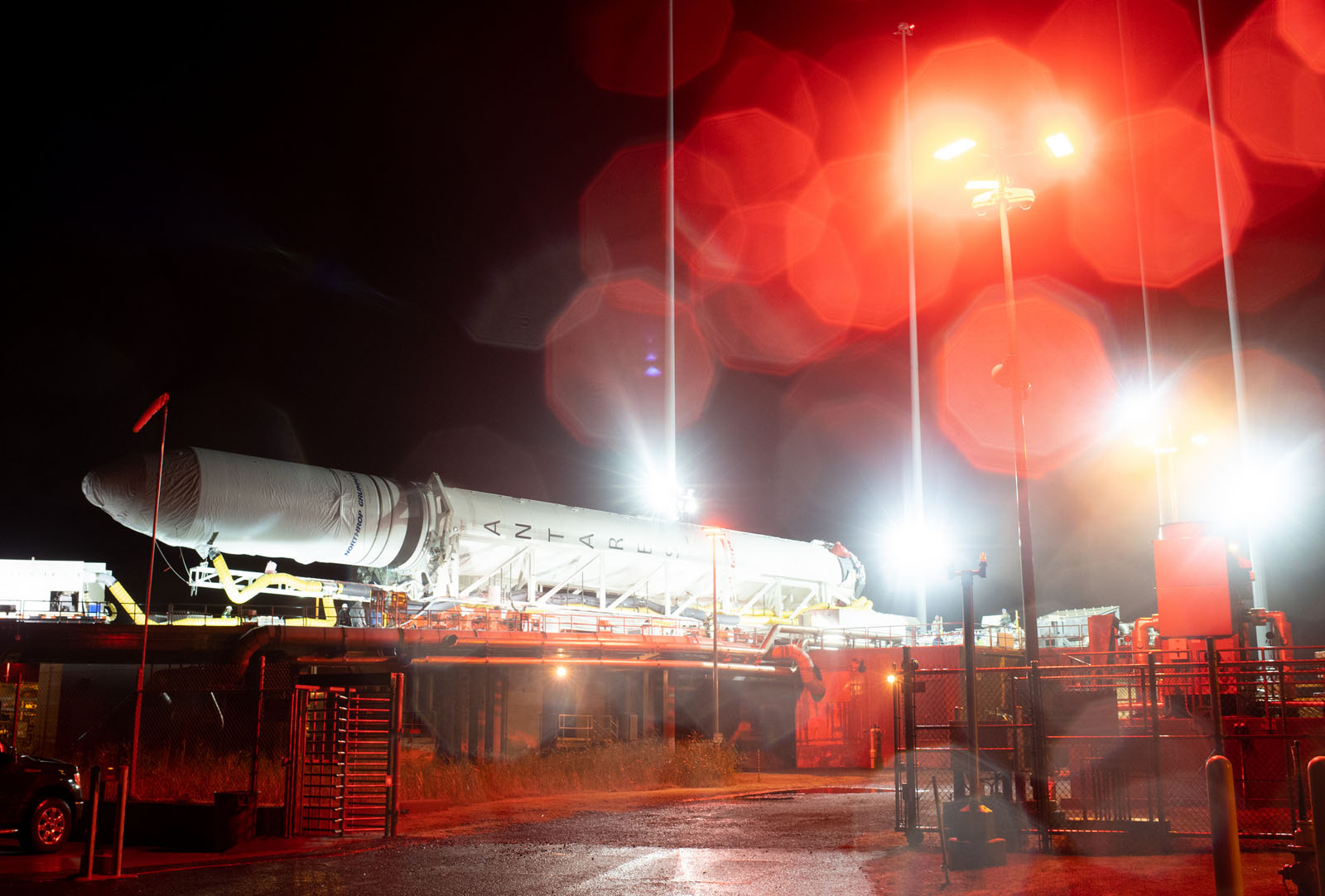Watch Northrop Grumman Roll Its Antares Rocket to the Pad for Launch! (Time-Lapse Video)
It's almost launch time for Northrop Grumman's next Antares rocket, which rolled out to its seaside pad in Virginia late Monday (Nov. 12) for a NASA cargo mission to the International Space Station this week. You can see that launch pad trek in an awesome new time-lapse video.
The NASA video above (and on YouTube here) shows the Antares rocket rolling out to Pad-0A at NASA's Wallops Flight Facility on Wallops Island. The rocket will launch an uncrewed Cygnus cargo ship — also built by Northrop Grumman — early Saturday (Nov. 17) to deliver 7,500 pounds (3,402 kilograms) of NASA supplies to the space station. Liftoff is scheduled for 4:01 a.m. EST (0901 GMT).
After a few days' travel, Cygnus will arrive at the International Space Station, where it will be captured by astronauts using a robotic arm and parked at an open berth on the orbiting lab. [The Strange Science Riding on the Cygnus Spacecraft]
The Antares rocket and Cygnus spacecraft are built by Northrop Grumman Innovation Systems and are part of a fleet of robotic cargo ships that regularly deliver food, experiments and other supplies to the International Space Station. The other cargo ships include vehicles built by Russia, Japan, Europe and the U.S. spaceflight company SpaceX.
Most of those resupply ships are disposable and burn up in Earth's atmosphere at their mission's end. Currently, only SpaceX's Dragon space capsules can return cargo to Earth. Last weekend, Japan successfully tested a small re-entry capsule to return some experiment samples to Earth before its latest H-II Transfer Vehicle burned up.
The Cygnus launching Saturday will be the tenth for NASA by Northrop Grumman (formerly Orbital ATK). The company named the NG-10 spacecraft the S.S. John Young in honor of the famed Apollo 16 moonwalker who also commanded NASA's first space shuttle mission, STS-1, in 1981. Young died in January at age 87.
Editor's Note: This article was updated Nov. 15 with a new launch date and time; the launch has been delayed again due to weather.
Breaking space news, the latest updates on rocket launches, skywatching events and more!
Email Tariq Malik at tmalik@space.com or follow him @tariqjmalik. Follow us @Spacedotcom and Facebook. Original article on Space.com.
Join our Space Forums to keep talking space on the latest missions, night sky and more! And if you have a news tip, correction or comment, let us know at: community@space.com.

Tariq is the award-winning Editor-in-Chief of Space.com and joined the team in 2001. He covers human spaceflight, as well as skywatching and entertainment. He became Space.com's Editor-in-Chief in 2019. Before joining Space.com, Tariq was a staff reporter for The Los Angeles Times covering education and city beats in La Habra, Fullerton and Huntington Beach. He's a recipient of the 2022 Harry Kolcum Award for excellence in space reporting and the 2025 Space Pioneer Award from the National Space Society. He is an Eagle Scout and Space Camp alum with journalism degrees from the USC and NYU. You can find Tariq at Space.com and as the co-host to the This Week In Space podcast on the TWiT network. To see his latest project, you can follow Tariq on Twitter @tariqjmalik.

